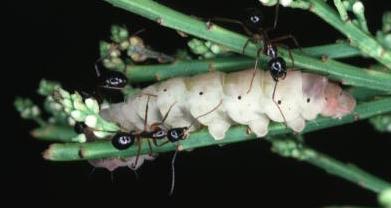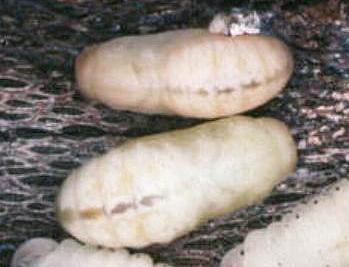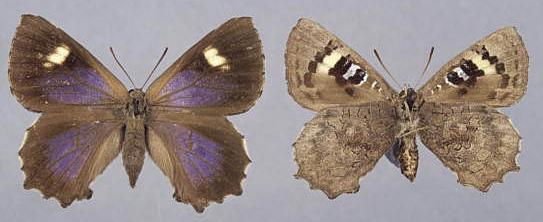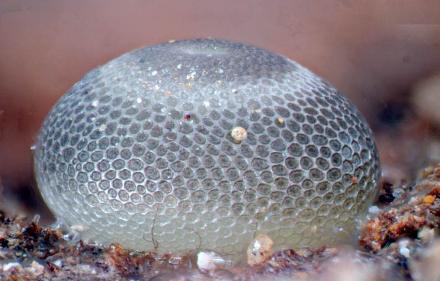
| Small Brown Azure ARHOPALINI, THECLINAE, LYCAENIDAE, PAPILIONOIDEA | (donherbisonevans@yahoo.com) and Stella Crossley |

(Photo: courtesy of
Museums Victoria)

| Small Brown Azure ARHOPALINI, THECLINAE, LYCAENIDAE, PAPILIONOIDEA | (donherbisonevans@yahoo.com) and Stella Crossley |

(Photo: courtesy of
Museums Victoria)
This Caterpillar is white, with black spiracles, and a brown head. It has two flaps, one each side of the tail, which are said to emit a chemical which pacifies the ants. It lives in a nest of any of several species of :
It feeds on the shoots and bark of plants in SANTALACEAE such as :
The caterpillar grows to a length of about 2.5 cms.

The pupa is pale with a brown dorsal stripe, and has a length of about 1.5 cms. Pupation occurs within the host ants nest.

> The adults are a purple with a bronze sheen on top, with scalloped wing margins. However, the females also have a broad black band around the margins, and a white patch near the tip of each forewing.

Underneath, the wings are fawn, with an arc of black spots and a pair of black and white spots under each forewing, looking like a pair of eyes with eyebrows. The butterflies have a wing span of about 4 cms.

The eggs are dome shaped, and grey with a network of white polygonal ribs. The eggs have a diameter of about 1 mm. They are laid in groups of one to four on debris at the base of a foodplant.
The species has been found in various localities in the southern half of the Australian mainland including
Further reading :
Michael F. Braby,
Butterflies of Australia,
CSIRO Publishing, Melbourne 2000, vol. 2, pp. 710-712.
Baron Cajetan Felder & Rudolf Felder,
Zoologischer Theil: Lepidoptera,
Reise der Osterreichischen Fregatte Novara,
Band 2, Abtheilung 2, Part 2 (1865), p. 217, and also
Plate 28, figs. 1, 2, 3.
 caterpillar |  butterflies |  Lepidoptera |  moths |  caterpillar |
(updated 24 May 2011, 3 April 2025)